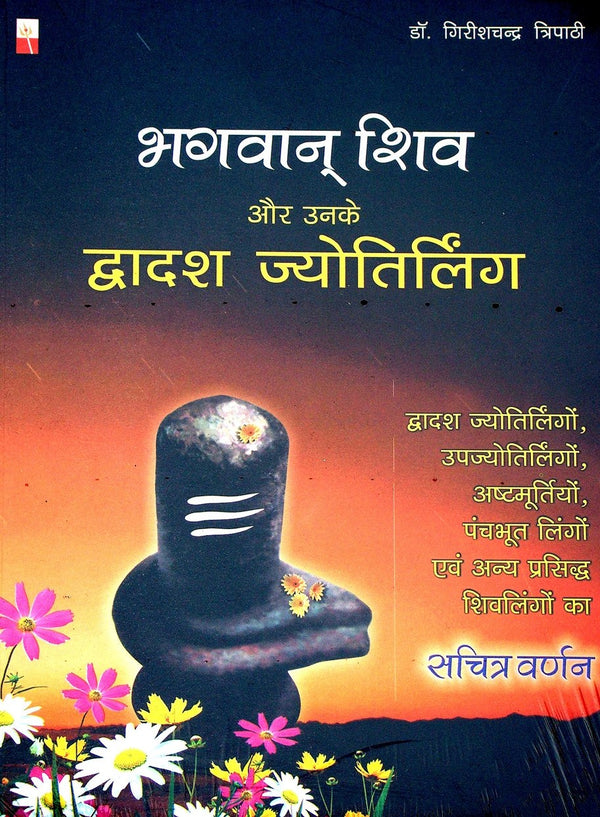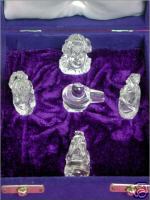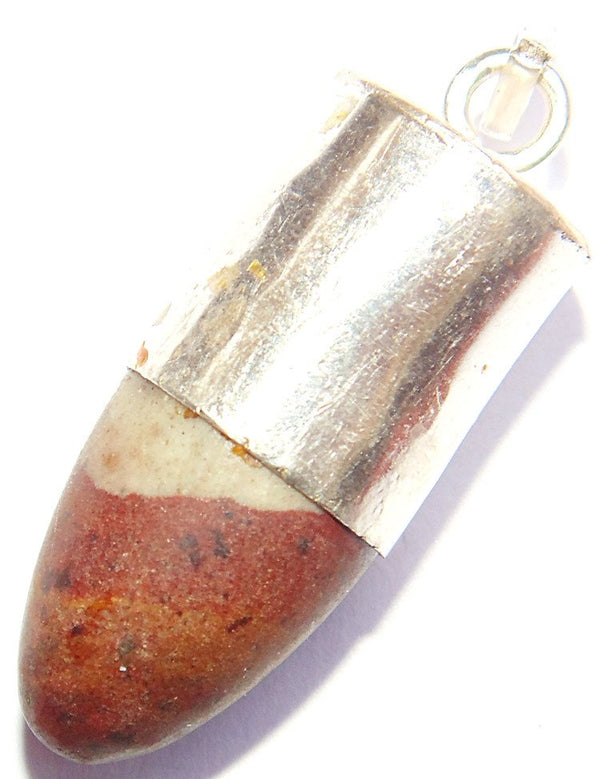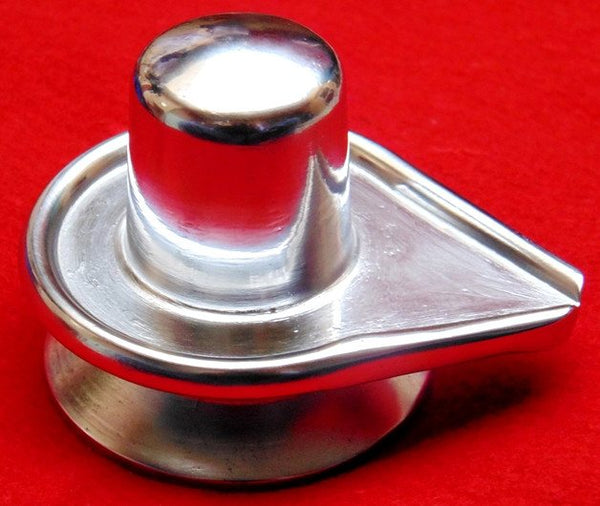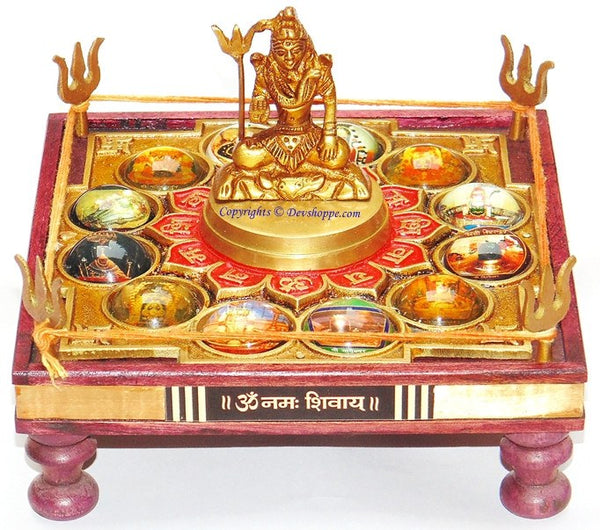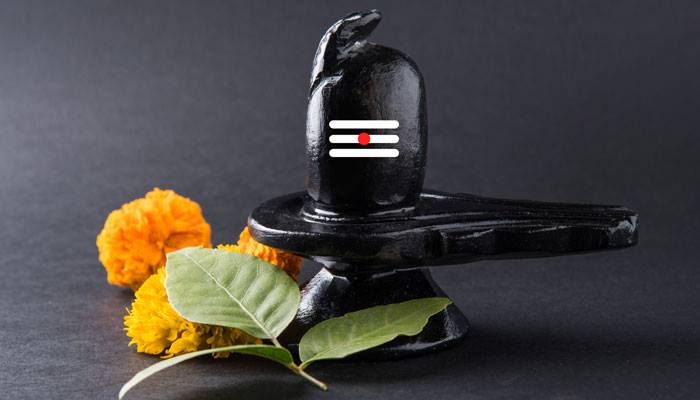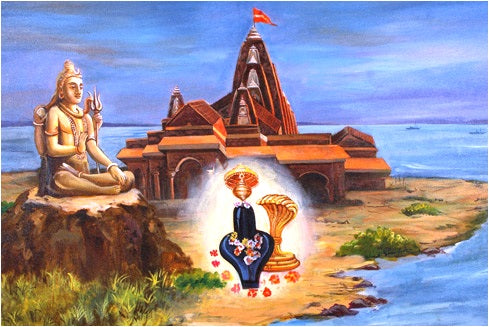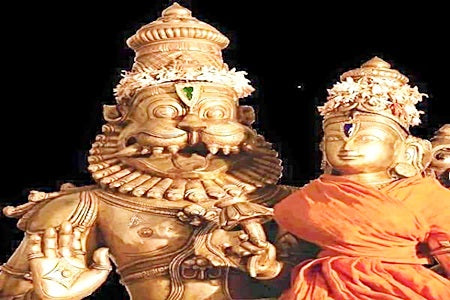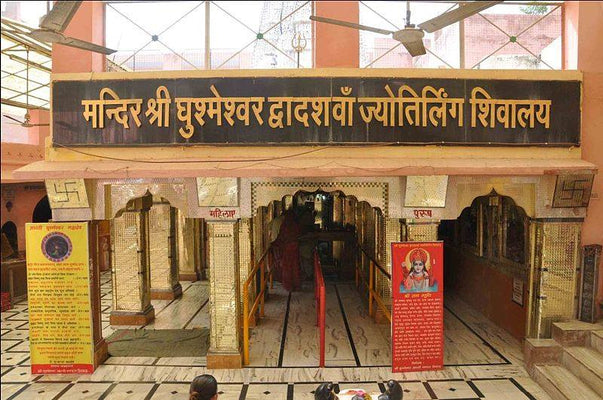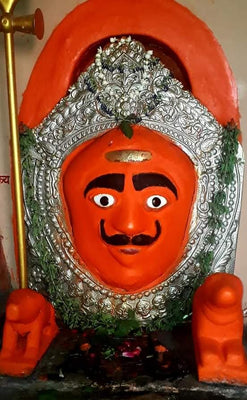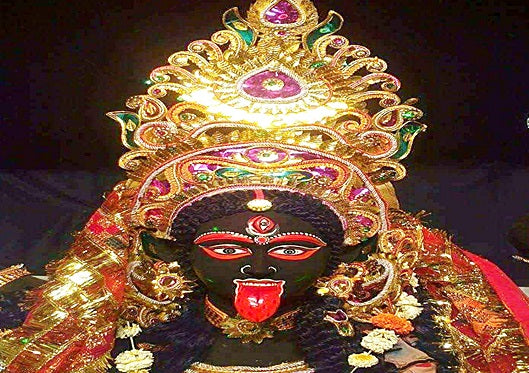Shri Tryambakeshwar Jyotirlinga
Trimbakeshwar is an ancient Hindu temple in the town of Trimbak, in the Nashik District of Maharashtra, 28 km from the city of Nashik and 40 km from nashik road. The place is memorable due to its picturesque hills, roads and cool breeze .This hill station like place lies in the formidable shadow of Brahmagiri hills in the Sahyadri range and it is the source of holy river Godavari. The place is also known for its Simhastha Kumbha Mela, which comes every 12 years as per the Hindu calendar.
What makes the Trimbakeshwar Jyotirlinga unique is that it has three faces embodying Lord Brahma, Lord Vishnu & Lord Mahesh(Shiva). All other Jyotirlingas have Shiva as the main deity. The temple is known for its appealing architecture and sculpture.
Trimbakeshwar Jyotirlinga is in a small hollow space, which contains a pot of water. Water from the river Godavari constantly pours on the top of linga. The Jyotirlinga is unique as it has three faces embodying Lord Brahma, Lord Vishnu & Lord Mahesh (Shiva).Generally the Jyotirlinga has a silver cover on festive occasions it is adorned with a golden cover of five faces each with a golden crown.
Legends
There are two stories related to Trimbakeshwar. One story is about Simhastha Parva according to Padma Puran.
Centuries ago the gods and goddesses used to roam in India. They helped sages and people living here at the time of various difficulties, especially from the demons who were a nuisance. However, this fight generally caused heavy damages to both, gods and demons. It was decided to settle the issue of supremacy once for all. They agreed that whosoever captures Amritakumbha (immortal nectar) will be the victor. Amritakumbha (pot with immortal nectar) was on the sea bed.
The gods were successful in getting nectar by fooling the demons. When the demons came to know of this, they launched a violent fight for Amrita kumbha (immortal nectar). In process drops of nectar fell at four places - Haridwar, Prayag, Ujjain and Trimbakeshwar. Trimbakeshwar is one of the four places where drops of heavenly nectar fell. At that time was when the planet Jupiter (Guru) had entered the hemisphere of Leo (Simha). And as this same planet enters the hemisphere once in 12 years, the Kumbh Mela is held once in 12 years in the respective areas.
other story is equally interesting. Sage Gautam used to live in this area. Once there was severe drought for 24 years. To come to the rescue of people, sage Gautam worshipped Lord Varun (rain god) and the god was pleased. He blessed the sage with the gift of plenty of rains in the area. This made the area lush green and full of water.
But this made other sages jealous of Gautam. They sent a cow to destroy the granary of Gautam. When Gautam tried to shoo her away, she was injured and died. Waiting for such an opportunity, other sages charged Gauam of great sin of killing mother cow and made him go for penance. He was asked to worship Lord Shiva and bathe in Ganga.
Gautam appeased Lord Shiva who in turn asked Ganga to come to Gautam's place. Gauatm and Ganga prayed to Lord Shiva to come here with Parvati and stay with them. They made Lord Shiva agree to the request and he decided to settle here. Here the river Ganga appeared in the form of river Godavari. Hence it is also known as Ganga Godavari or Gautami Godavari. People here worship the Godavari as Ganga. Lord Shiva also resides here in the form of Trimbakeshwar.
Trimbakeshwar Temple Shrine
The present structure of the temple complex was built by Nana Saheb Peshwa during his regime between 1755-1768.It is Hemad Panthi style temple and its architecture is shaped mechanically. It is East facing temple and surrounded by four sides with stone walls. Trimbakeshwar temple has 5 domes and each tomb has five golden pots. The flag of the temple is made of the 5 substances. The flag and the golden pots were donated by Anna Saheb Vichurkar.
The lotus flowers behind the idol look real. There is arrangement for devotees to stand in a queue during darshan time. On the entrance a small temple of Nandi comes first. There is a small hall or sabhamandap to assemble. Here purohits perform different pujas.
Temple Timings and Related Information
Temple is managed by Shri Trimbakeshwar Jyotirlinga Trust. However, pujas are controlled by purohits .There are three main pujas performed every day. Pujas are between 7 to 9 am, noon puja at 1 pm and sayam puja between 7 to 9 pm. During the night worship, sheja arti is carried out and a silver mask placed on a bed in a hall of mirrors. Every Monday between 3:30 and 5 pm, a palki (palanquin) carries the silver panch mukhi mukhota (five faced image of Lord Trimbakeshwar) from the temple complex to nearby Kushavrata Tirtha and back. An abhishek is performed there. The palki processions carry a golden crown during Shivaratri, Kartik Purnima and Dussehra. The special golden crown of the Lord donated by the Peshwas is also shown to devotees once a week on every Monday at 4:30 pm.
Panch Tirtha Yatra : Pancha tirtha yatra includes Gangadwar, Kushavarta, Bilwaka, Neel Parvat and Kanakhala tirtha. It is believed that one who takes a bath in the above frees himself from the cycle of life and death.
Kushavrata Tirtha: Kushavrata Tirtha is a main place of pilgrim attraction during the Simhastha Kumbha mela. Devotees come to have a bath in this holy pond and become free of results of their sins. It is just 200 meter away from main Trimakeshwar temple complex.
Bilwa Tirtha: Bilwa Tirtha is situated to the north of Neel Parvat. There is a temple of Bilvakeshwar Mahadev.
Gautama Tirtha: Gautama Tirtha is to the south of the Ganga and the Trimbakeshwar temple. God of water Varun was pleased with Gautama and he gave this tirtha as a permanent source of water. To the north is Gautameshwar and to the south is Rameshwar Mahadev.
Indra Tirtha : Indra Tirtha is to the east and near Kushavarta. This is known as Shakra-Kupa for Indra wiped off his curse given by sage Gautama for enjoying Ahilya, by a bath in this tirtha.
Sant Nivruttinath Samadhi Temple: The place is 2 km away from Trimbakeshwar temple. It is the shrine with a narrow colourful dome houses the samadhi of Sant Nivrutti Nath. He was the elder brother of Maharastra's most famous saint Dhyaneshwar. Nivrruttinath was the first to achieve sainthood in Varkari Sampradaya and he guided all his three siblings. The place remains open between 5 am tand 10 pm daily.
Neel Parvat: Neel Parvat is located in the north of the Trimbakshwar city and it is one of the five major pilgrim places. The visitors normally comes in the late afternoon or early morning to visit this place.The 200 steps climb takes 45 minutes to one hour.If one can not climb the mount,ther is also an option to hire an auto rickshaw for Trimbakeshwar temple-Neel Parvat round trip and it charges around Rs.60 to Rs.75. It's a walking distance from the Trimbakeshwar bus stand.
Shreemant Seth Kapol has built about 200 steps. On the summit is the temple of Nilambika and Matamba Devi, further on is an ancient temple of Nilkantheshwar Mahadev and an idol of Parashuram. There is an old akhada(Matha) called Dashnami Panchayati Akhadaor matha of the Naga Gosavi sect and an ancient temple of Sadguru Dattatreya. There are many temples apart from this.The temples are very clean and are situated in a row,close to each other.
Brahmagiri Hill: Climbing the Brahmagiri Hill which is 4248 feet high is also a must do for the mountain lovers when they visit Trimbakeshwar.It is 2.5 km north of Trimbakeshwar Temple.
Ganngdwar: Ganngdwar is situated in right of the middle of Brahmagiri Mountain. There is a temple of Ganga, now known as Godavari River. Ganga appears first time here, after it vanishes from Brahmagiri Mountain.There are 750 steps to Gangadwar. They were built by Sheth Karamasi Hansraj of Kutch, Gujarat. The work was commenced in 1907 and was completed in 1918.Sheth Hansraj also built road for the visitors.Gangadwar is one of the five tirthas. There is an idol of Ganga and 108 shivalingas installed by Rishi Gautam.The caves of Gorakhnath is also situated at this place.
Gorakhnath Math: The saint Gorakhnath who born in 11th century had established Nath Sampraday or Nath movement.He became well known in India.He showed many miracles of Yoga.He preached to Nivruttinath and granted him the initiation of Nath community.The samadhi temple is near trimbakeshwar temple.
Parikrama: On third Monday of holy shravan many devotees undertake parikrama (circumnavigation) of the Brahmagiri Hill.More than 3.5 lacs devotees walk a distance of 30 km in about 6 to 7 hours.Many devotees also perform a 12 km parikrama through different route of Brahmagiri hill in 12 to 13 hours.
Swami Smarth Ashram: It is situated about 2 km from Trimbakeshwar Temple.Swami Smarth was a very popular Spiritual Guru in Maharastra in the 19th century .The temple is spacious and clean.The temple faces Sahyadri and Trimbak hence offers a beautiful view. It remain opens all the day.
If Devotee has time in hand, he must visit Sri Shirdi Sai temple in Shirdi and Sri Shani Shinganapur temple too which are not too far away from Trimbakeshwar.
Getting there and around
By Air : Nearest Domestic airport is Gandhinagar Airport, Nasik (ISK) 31 kms .Another nearest airport from Trimbakeshwar is at Mumbai, which is about 200 km away from the holy city. Taxi services are available from Mumbai airport to Trimbakeshwar.
By Rail : Nearest railhead is at Nasik. It is one the major railway stations connected to all manor cities in India. One can get enough convenient trains from Nasik to other cities.
By Road : Trimbakeshwar is connected by bus services run by Maharashtra road Transport Corporation. There are many private luxury buses and taxis available from Mumbai to Nasik.
Accomodation
There are good hotels, guest houses and dharmashalas in Trimbakeshwar town. Yatri Niwas run by Trimbakeshwar trust is also a good option to stay.


